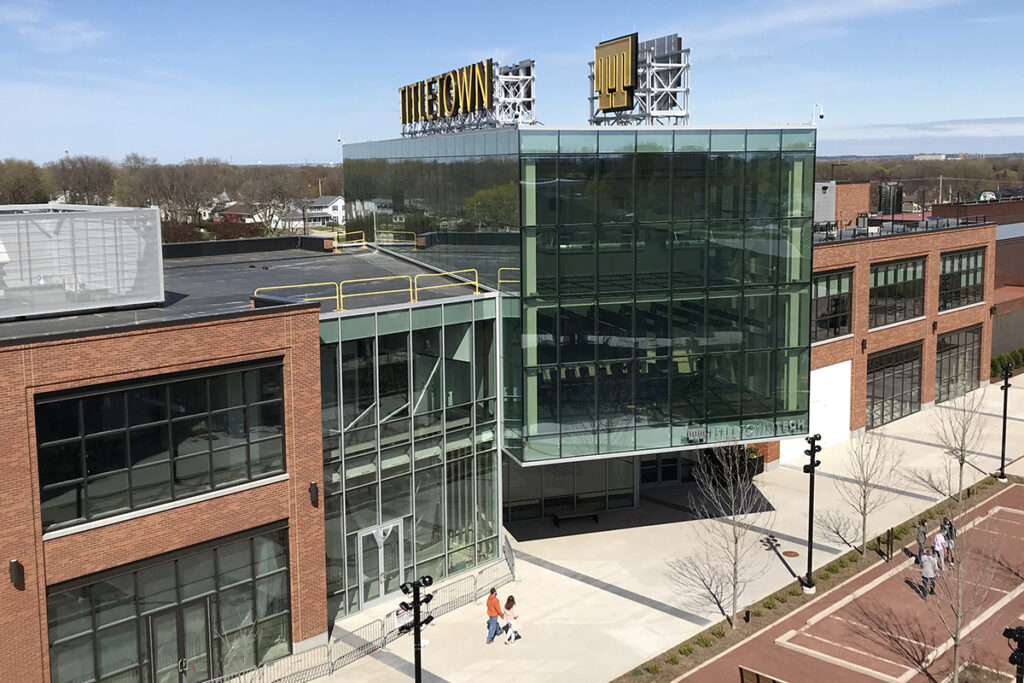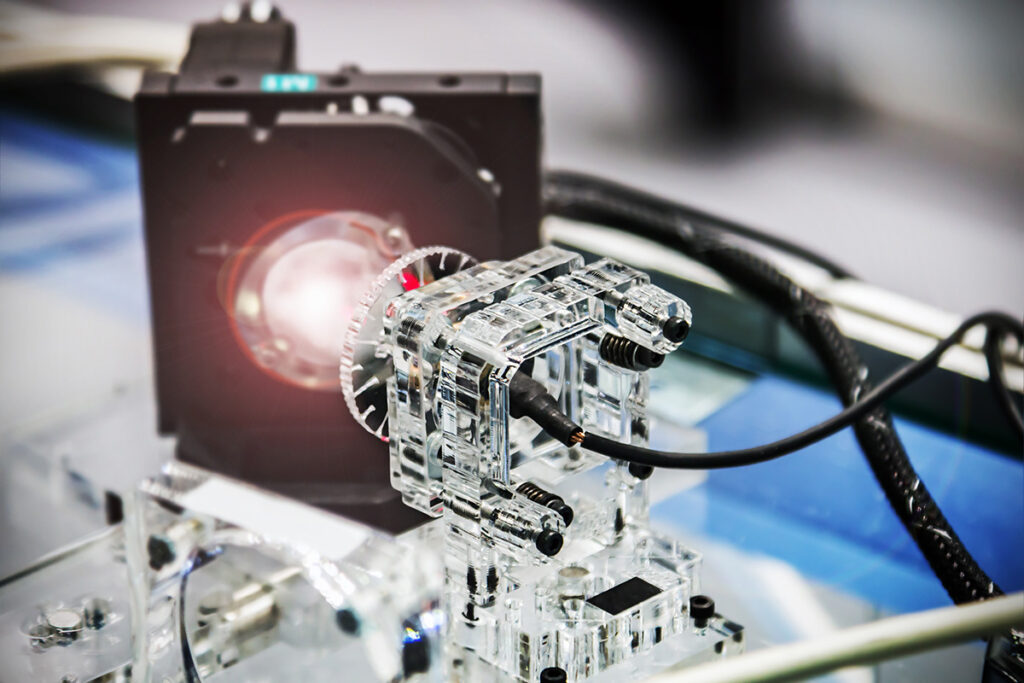I first visited Green Bay in late 2015, just prior to TIP being engaged by the Greater Green Bay Chamber of Commerce to create an economic development strategic plan. Over the course of the planning process, which concluded with the rollout of recommendations in May 2017, it became clear there wasn’t much traction in the Green Bay startup environment. Risk capital was hard to find. Entrepreneurial support efforts were fragmented. The region didn’t have any true innovation hubs, coworking spaces, or accelerators.
However, during the fifteen-month engagement, it was evident that local leaders were committed to better supporting startup and entrepreneurial growth. That commitment was reflected in the Chamber’s strategic plan, which included recommendations focused on innovation. Today, the region boasts strong startup and entrepreneurial supports. An examination of some of the key initiatives that have transformed Greater Green Bay can help illuminate the characteristics of a vibrant innovation ecosystem.
They have involved anchor institutions.
As TIP began finalizing the strategic plan in 2017, the Green Bay Packers leadership announced a partnership with Microsoft to create a venture capital fund. TitletownTech, as the initiative came to be known, is an example of how a community can leverage an anchor institution to create strategic momentum. Today, TitletownTech is venture fund, accelerator, and collaborative workspace that serves as the centerpiece of a thriving mixed-use district adjacent to Lambeau Field. It was created with the goal of supporting technology startups in Wisconsin and across the Midwest while seeing an impressive ROI. Since its launch, the fund has raised $95 million in total and invested in 25 companies, including Overtime, StatusPro, and Synthetaic. More than half of the companies invested in the first round have subsequently raised additional capital. In addition to helping scale local startups, TitletownTech has been the catalyst in attracting high-growth firms from outside the state, including firms founded by former Wisconsin residents who had achieved success working in Silicon Valley. It is also currently incubating Equity League, a joint endeavor between Microsoft, the Packers, the Milwaukee Bucks, and the Milwaukee Brewers. The Equity League is an investment network building a portfolio of impact-driven technology companies, with a commitment to creating more opportunities for Black and LatinX founders.
Greater Green Bay’s higher education institutions are also playing a vital role in the regional innovation ecosystem. In the 2017 Chamber plan, our team sought to help local leaders address talent attraction, retention, and development challenges through a strategy to grow and re-mission University of Wisconsin-Green Bay (UWGB) to become more R&D-focused. The TIP-led planning process was also instrumental in galvanizing the creation of the university’s new engineering school. In 2019, UWGB established the Brown County STEM Innovation Center, the home of the Richard J. Resch School of Engineering, which began accepting students that fall. Currently, UWGB is seeking a National Estuarine Research Reserve (NEFF) designation for Green Bay, the largest freshwater estuary in the US. This designation would establish a long-term research, education, training, and stewardship partnership with the National Oceanic and Atmospheric Administration and coastal states. In addition to UWGB, other higher education institutions such as Northeastern Wisconsin Technical College and St. Norbert College serve as economic engines. Each of the region’s higher education partners have new leadership and are positioned to continue engaging industry partners more closely in innovation efforts.
They boast active private sector partners.
Other private sector efforts have helped bolster Green Bay’s innovation ecosystem in the years since the announcement of TitletownTech. Schneider National and Schreiber Foods, two companies headquartered in Green Bay, have been intentional in the development of their internal innovation teams and resources. Transportation and logistics provider Schneider National recently opened a new 20,000 square-foot innovation center on its Green Bay campus. Known as The Grove, this facility houses cutting-edge technologies that enable teams to drive transformational innovation across the supply chain and logistics ecosystem. It also serves as a dedicated collaborative workspace for associates and customers. Schneider expects the innovation center to play a crucial role in driving the future of freight and promote the region as an attractive place for top talent wanting to work in freight tech.
The Schreiber Foods global technology center is dedicated to the development, testing, and packaging of new food products. It’s a part of Schreiber Foods’ home office and includes office space, multiple test kitchens, laboratories, a data center, and a pilot plant for evaluating new dairy processes. The center houses Schreiber’s R&D services, which help bring new dairy products and plant-based analogs to market by assisting with product and packaging development, ingredient sources, equipment consulting, product and process optimization, laboratory testing and analysis, and sensory appeal.
They benefit from forward-looking business development organizations.
Green Bay’s innovation ecosystem has also been strengthened by the complementary work of more traditional economic and business development organizations. In particular, the Chamber has taken a lead role in driving collaboration across the entrepreneurial landscape. The Chamber rebranded the old Advance Business & Manufacturing Center Incubator as the Startup Hub to serve as a centralized starting point for entrepreneurs, innovators, and businesses seeking resources; took over the new downtown coworking space and accelerator which became the Urban Hub; and launched the region’s first angel investment network—Tundra Angels. When leaders saw that the COVID-19 pandemic was having a disproportionate impact on underserved populations, the Chamber led efforts to link regional innovation and entrepreneurship efforts with equity through Blueprint Green Bay, an accelerator for local entrepreneurs of color, female- and veteran-owned businesses, and startups. The Chamber has also been instrumental in bringing a collaborative food incubator to an old canning plant purchased by a local developer. With its recent grand reopening, the Cannery will showcase innovations from local early-stage food and beverage entrepreneurs.
These projects and initiatives, combined with other catalyst investments in downtown (such as the Hotel Northland), are adding to the image of Greater Green Bay as a community that is invested in building a brighter future. Startup activity has been on a clear upward trajectory. As TIP’s research showed when we returned to Green Bay to execute a strategic plan update in 2020, the region has successfully exited 28 startups since 2004.[1] The change in Greater Green Bay’s innovation and startup community since TIP’s 2015 visit is a lesson in how quickly collective strategic efforts can transform the economy and perception of a region. I’m excited about what’s been accomplished and what’s underway as Greater Green Bay emerges as one of the Midwest’s leading startup hubs. But I’m even more excited about the future, as the community focuses on diverse entrepreneurs and historically underserved groups. Greater Green Bay has the potential over the next 5 to 10 years to become one of the nation’s premier smaller markets, on par with dynamic entrepreneurial environments like Asheville, Chattanooga, and Bend. I am certain that the region will continue to grow an economy built on inclusivity and innovation because TitletownTech, the Chamber, and every other component of Greater Green Bay’s increasingly diverse entrepreneurial landscape are working toward that end. It will be fun to watch…every bit as fun as watching the Packers play on any given Sunday.
[1] See Figure 20 (page 30) of the July 2021 Economic Development Strategic Plan Update.
Image credit: Titletown Tech building Green Bay, Wisconsin by Willsome429 Via Wikimedia Commons (CC BY-SA 4.0).



